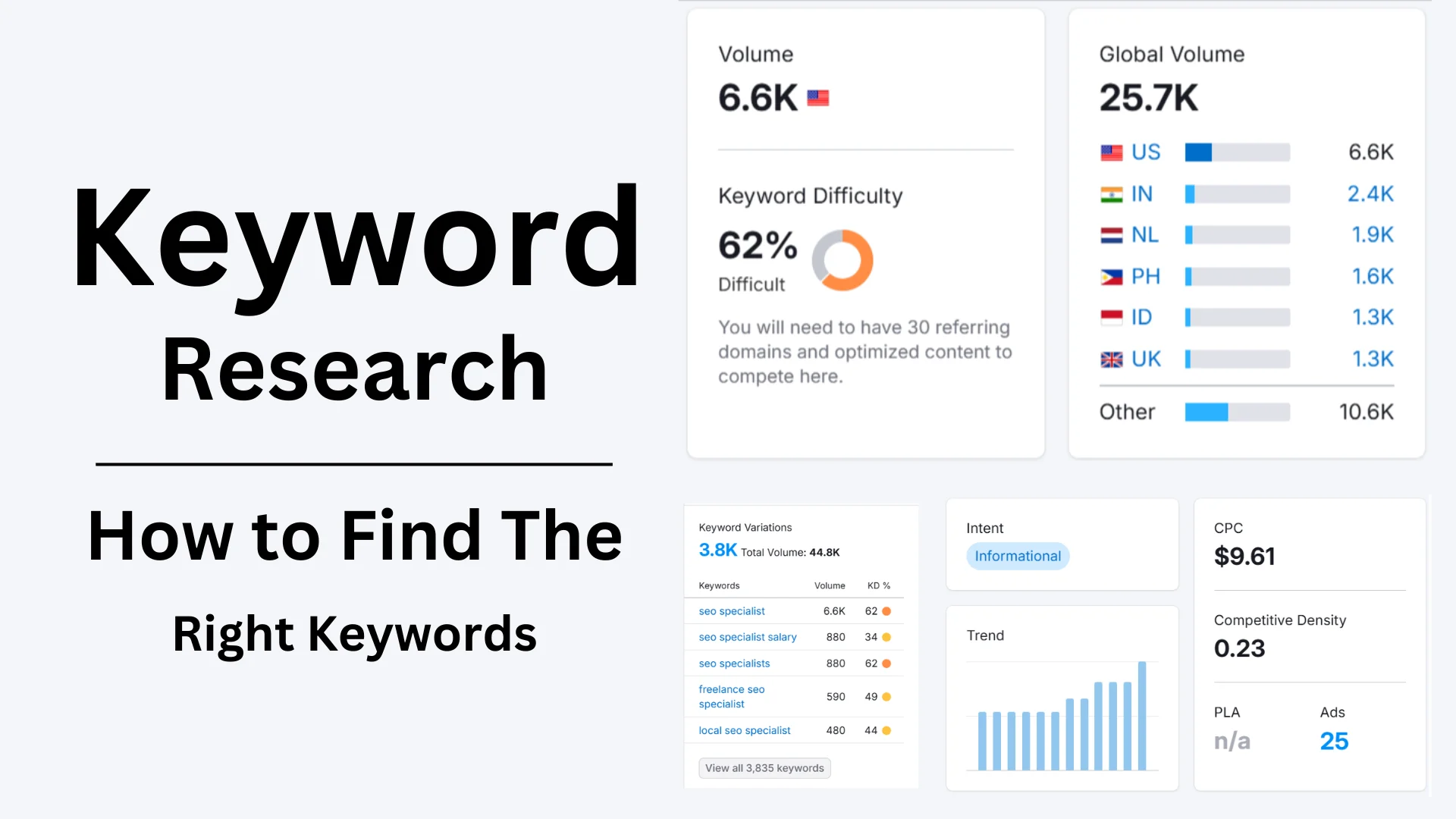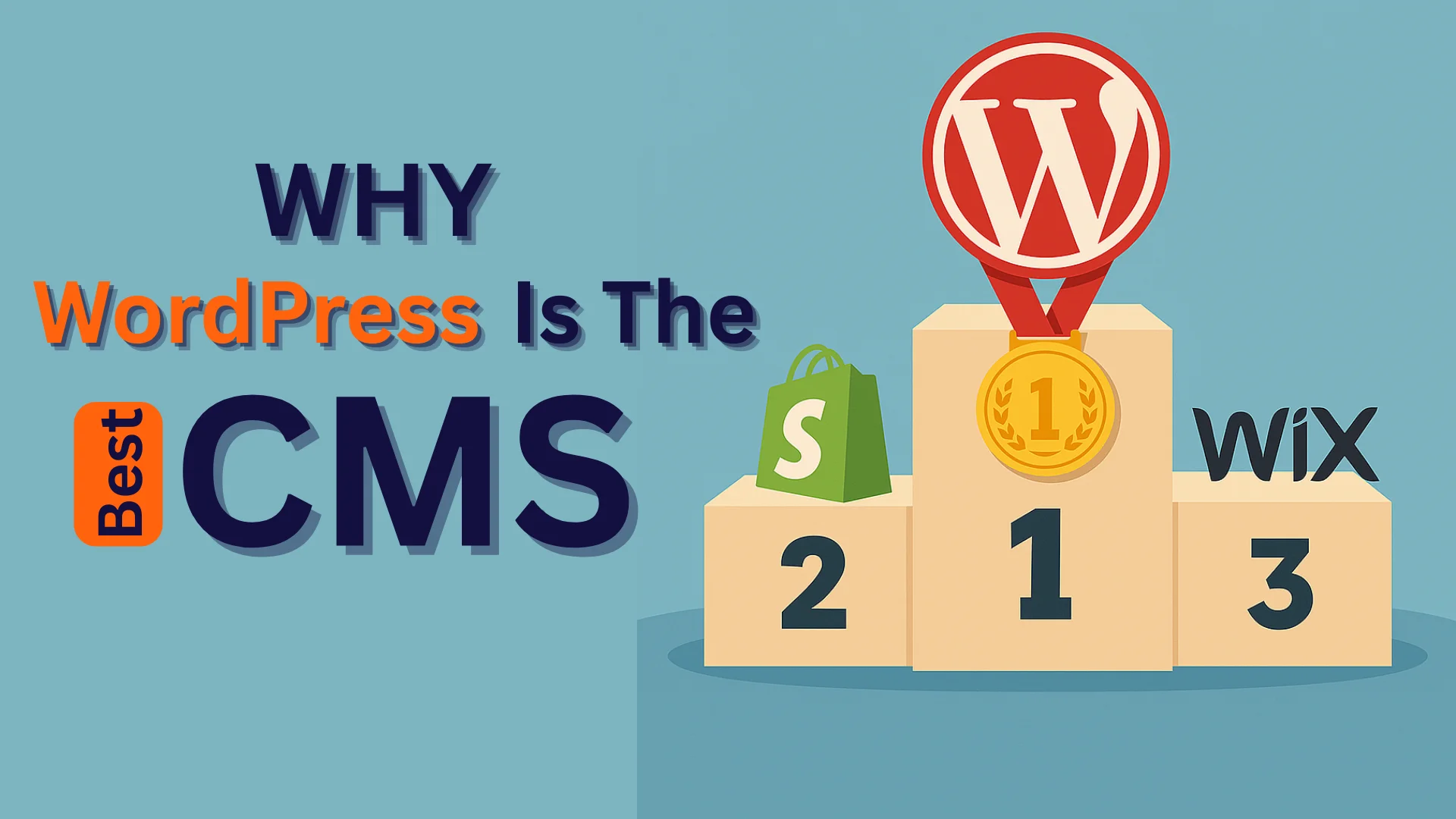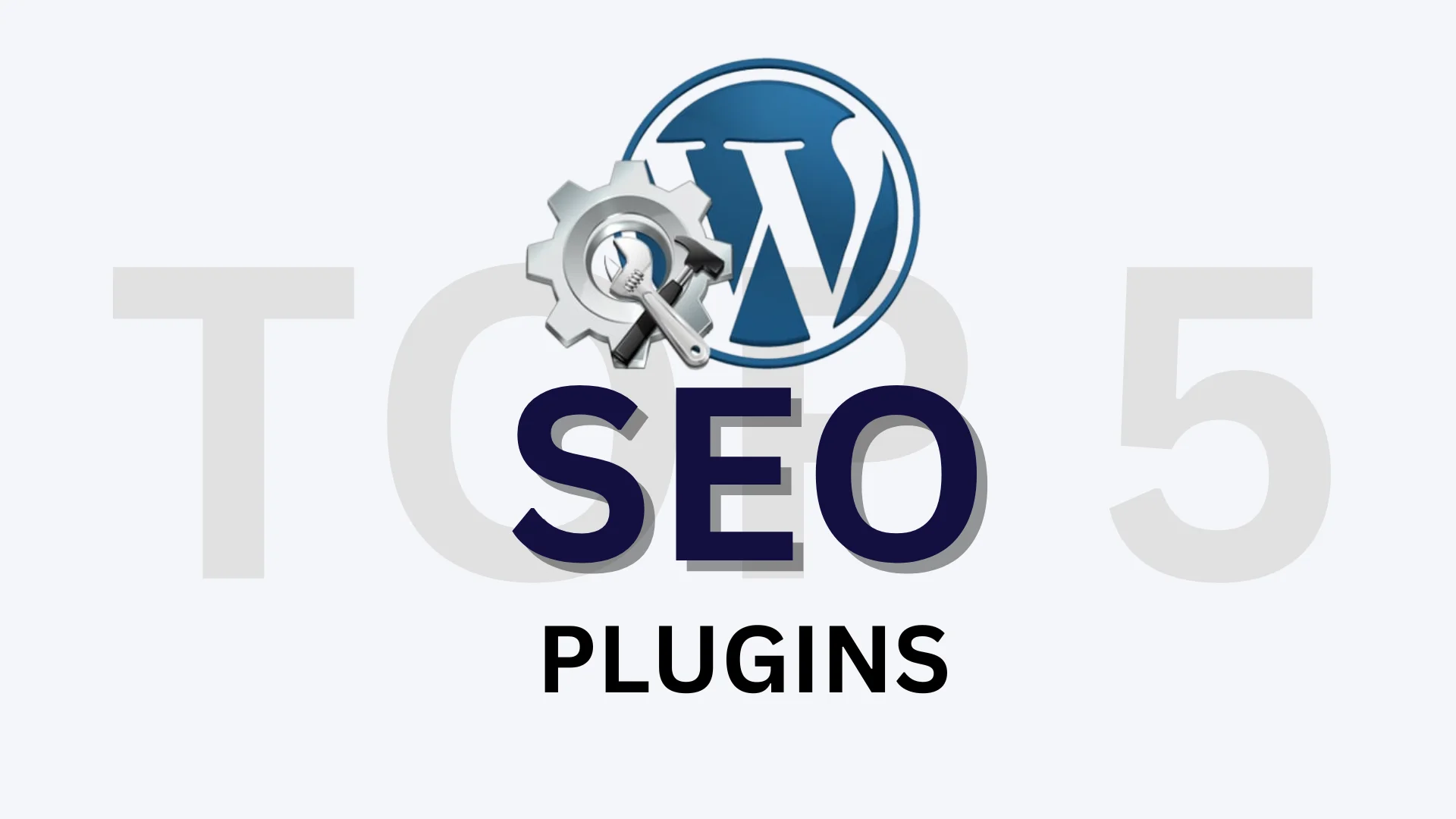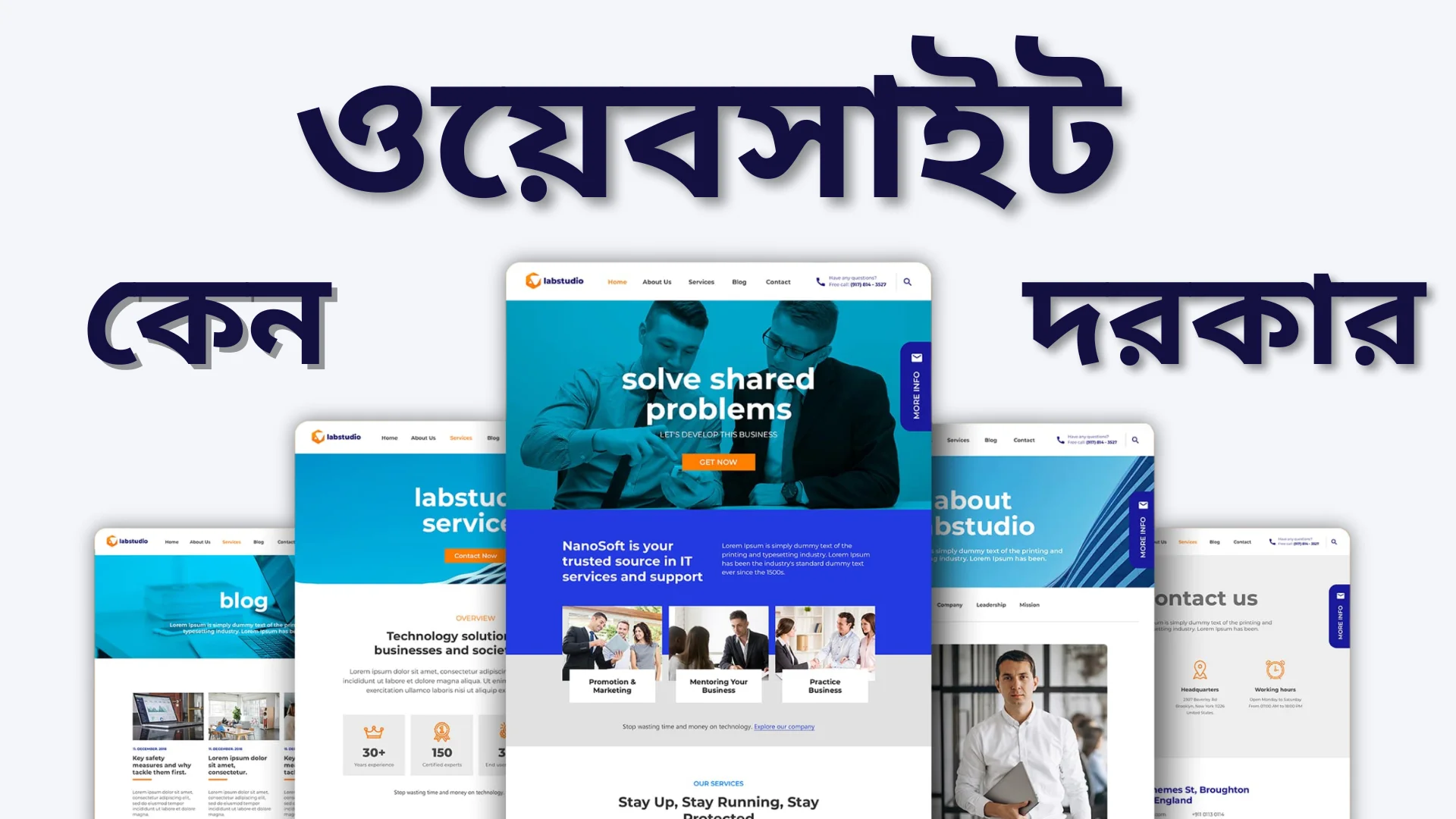How to Do Keyword Research for Website SEO: Keyword research is a key factor in successful SEO. Choosing the right keywords will help you rank your website higher on search engine results pages (SERPs), increase your organic traffic/visitors, and ultimately boost your revenue. To truly attract your target audience and climb the search engine rankings, you need a solid SEO strategy—and at the heart of that strategy lies effective keyword research. In today’s tutorial, we will learn everything about keyword research, including short-tail and long-tail keywords, search volume, search intent, keyword difficulty (KD), the best keyword research tools, and how to implement keywords effectively on your website.
How to Do Keyword Research for Website SEO: A Complete Guide-Table of Content:
Table of Content:
What is Keyword Research?
Keyword research is the process of identifying and analyzing the words and phrases (keywords) that people use in search engines like Google, Bing, or Yahoo to find information, products, or services. It is a fundamental aspect of Search Engine Optimization (SEO) and digital marketing, as it helps businesses and content creators understand what their target audience is searching for.
Why is Keyword Research Important?
- Improves Search Rankings: Using the right keywords helps your website appear higher on Search Engine Results Pages (SERPs).
- Increases Organic Traffic: Proper keyword targeting attracts more visitors who are actively searching for related content.
- Enhances User Experience: By aligning your content with search intent, you provide relevant and valuable information.
- Boosts Conversions & Revenue: Well-researched keywords can help attract potential customers, increasing leads and sales.
Understanding Keyword Types
1.Short-Tail Keywords:
A short-tail keyword (also known as a broad keyword or head term) is a search query that consists of one to three words and is typically very general. These keywords have high search volume but also come with high competition and lower conversion rates because they are less specific.
Pros:
- High search volume (more traffic potential)
- Broad reach (can attract a diverse audience)
- Great for brand awareness and visibility
Cons:
- Extremely competitive
- Lower conversion rates due to lack of specificity
- Harder to rank for, especially for small websites
2.Long-Tail Keywords
Long-tail keywords are search phrases that consist of three or more words and are more specific than short-tail keywords. They typically have lower search volume but also lower competition and higher conversion rates because they target a more precise audience.
Pros:
- Easier to rank for due to lower competition
- Higher conversion rates (more targeted audience)
- Helps attract highly engaged and ready-to-convert users
Cons:
- Lower search volume compared to short-tail keywords
- Requires more keyword research to find the best ones
- More keywords are needed to generate large traffic
Key Factors in Keyword Research
1. Search Volume
Search volume refers to the number of times a keyword is searched within a specific period. High search volume keywords attract more traffic, but they are often competitive. Low search volume keywords might have less competition but can still be valuable if they are highly relevant to your niche.
2. Search Intent
Search intent refers to the purpose behind a user’s search query. It helps search engines like Google understand what users are looking for and deliver the most relevant results.There are four main types of search intent:
(I) Informational Intent
Informational intent occurs when users are searching for knowledge, facts, or instructions. They are not looking to buy anything but rather to learn something. These searches often start with words like “what,” “how,” “why,” “guide,” or “tips.”
For example, someone searching “How does SEO work?” wants to understand the concept of SEO rather than purchase an SEO tool.
🔹 Examples of Informational Intent:
- “What is digital marketing?”
- “How to lose weight naturally?”
- “Weather forecast for tomorrow”
- “Who is the CEO of Tesla?”
Best Content for Informational Searches:
- Blog posts
- How-to guides
- Tutorials
- Wikipedia-style articles
(II) Navigational Intent
Navigational intent happens when a user is looking for a specific website, brand, or online platform. Instead of typing the full URL, they search for the website name in a search engine. This type of intent usually involves branded searches.
For example, if a user types “Instagram login”, they already know they want to go to Instagram and log in.
🔹 Examples of Navigational Intent:
- “Facebook login”
- “Nike official website”
- “YouTube”
- “Amazon customer service”
Best Content for Navigational Searches:
- Homepage or landing pages
- Official brand pages
- Product/service pages
(III) Transactional Intent
Transactional intent means that the user is ready to take action, such as making a purchase, signing up for a service, or booking a ticket. These searches often include words like “buy,” “discount,” “deal,” “subscribe,” or “order online.”
For example, a user searching “Buy iPhone 15 Pro online” intends to make a purchase rather than just research iPhones.
🔹 Examples of Transactional Intent:
- “Buy Nike Air Jordan online”
- “Best SEO agency near me”
- “Get Netflix subscription”
- “Book a flight to New York”
Best Content for Transactional Searches:
- Product pages
- Service pages
- E-commerce listings
- Landing pages with strong CTAs (Call-to-Action)
(IV) Commercial Investigation Intent
Commercial investigation intent is when users are researching products or services before making a purchase. They are considering different options and comparing features, prices, and reviews. These searches often include terms like “best,” “top,” “vs,” “comparison,” or “review.”
For example, if a user searches “iPhone vs Samsung, which is better?”, they are comparing both options before making a decision.
🔹 Examples of Commercial Investigation Intent:
- “Best laptops under $1000”
- “SEMrush vs Ahrefs SEO tool comparison”
- “Top 10 budget smartphones 2024”
- “Best web hosting for small businesses”
Best Content for Commercial Investigation Searches:
- Product comparisons
- Reviews & testimonials
- “Best of” lists
- Buying guides
3. Keyword Difficulty (KD)
Keyword Difficulty (KD) is a metric that measures how hard it is to rank for a particular keyword in search engine results. It is usually expressed as a score from 0 to 100, with higher scores indicating more competition.
KD is essential for SEO strategy, as it helps determine whether a keyword is worth targeting based on your website’s authority and ranking potential.
Keyword Difficulty Scale (General Guidelines)

How to Choose Keywords Based on KD?
- For new websites → Target low-KD keywords (0-30) to build authority.
- For medium-authority websites → Go for medium-KD keywords (30-50).
- For high-authority websites → Compete for high-KD keywords (50+).
Best Keyword Research Tools
Using the right tools can simplify the keyword research process. Here are some of the best keyword research tools:
Google Keyword Planner (Free)
Ahrefs (Paid)
SEMrush (Paid)
Ubersuggest (Free & Paid)
KeywordTool.io (Free & Paid)
Google Search Console (Free)
How to Implement Keywords on Your Website
After finding the right keywords, you need to strategically place them throughout your website. Here’s how:
1. Title Tags & Meta Descriptions
Include your primary keyword in the page title and meta description to improve click-through rates (CTR).
2. Headings (H1, H2, H3, etc.)
Use keywords naturally in headings and subheadings to enhance readability and SEO.
3. URL Structure
Optimize URLs by including relevant keywords (e.g., www.digitalweblab.com/website-seo/).
4. Content Body
Sprinkle your keywords naturally throughout the content. Avoid keyword stuffing and focus on readability.
5. Image Alt Text
Add keywords to image alt text to improve accessibility and search rankings.
6. Internal & External Links
Link to relevant pages on your site (internal links) and authoritative external sources.
7. Blog Posts & Articles
Write high-quality, keyword-rich blog posts that provide value to users.
8. Schema Markup
Use structured data (schema markup) to help search engines understand your content better.
Conclusion
Effective keyword research is essential for SEO success. By understanding keyword types, analyzing search volume and intent, and using the right keyword research tools, you can improve your website’s visibility and attract the right audience. Implement keywords strategically across your site to enhance SEO performance and drive more organic traffic.
SEO is Technical—Leave It to the Experts!
Not everyone can master SEO—it’s a technical process that requires experience, strategy, and constant updates. One wrong move can hurt your rankings instead of improving them. That’s why it’s best to leave it to professionals who know what works.
Let our expert SEO team handle the hard work for you. Contact us today and let’s grow your online presence the right way!





